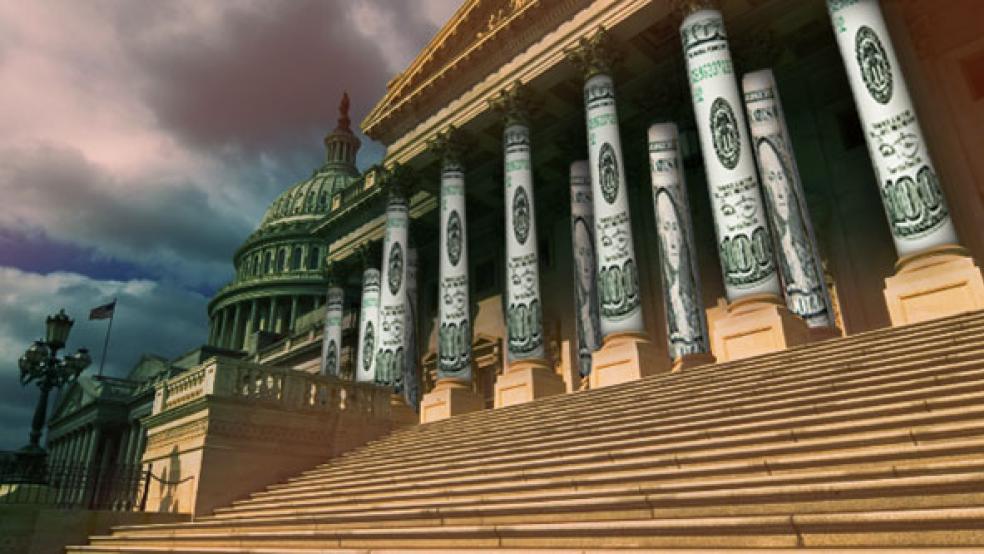Just how the politically divided Congress and the Obama administration will muddle through the next six months is impossible to say, but their failure to come to grips with a raft of thorny spending and tax issues would pose hardships for millions of Americans reliant on government aid and possibly set back the economic recovery.
At the close of 2012 and the dawning of 2013, many major fiscal events are set to occur simultaneously. It’s what Federal Reserve Board Chairman Ben Bernanke has called “a fiscal cliff” of spending and tax changes of a high magnitude. These include expiration of the Bush era tax cuts, the payroll tax cut and other important tax provisions. They also include the activation of the first installment of the $1.2 trillion across the board cuts or ‘sequester” of domestic and defense spending. And, once again, Congress may have to raise the debt ceiling.
If Congress and the White House decide to extend the Bush tax cuts along with scores of other tax breaks, that would increase the debt in 2022 by about $7.5 trillion above what it would be if the tax cuts were allowed to expire, according to the Committee for a Responsible Federal Government. This means the debt would rise from 70 percent of GDP today to 88 percent by 2022.
Conversely, if those major tax cuts expire – a highly unlikely event – the Congressional Budget Office projected that the annual deficit would shrink from $1.1 trillion to $196 billion – an 82% reduction over the next six years.The resulting increase in tax revenues combined with spending cuts would nearly halve the deficit in 2013, lowering it to $585 billion.
The CBO calculated in January that if the tax cuts were extended, the economy in fiscal 2013 would be more than two percent larger than if the tax cuts were allowed to expire, while the unemployment rate would be one percent lower than otherwise. On the other hand, the CBO concluded that over the long run, a continuation of the tax cuts would slow the growth of the economy and add to unemployment because of the substantial debt accumulation.
Here is a summary of important elements of the ‘fiscal cliff’:
• Bush-era tax cuts: In 2001 and 2003, Congress approved major tax cuts proposed by President George W. Bush that significantly lowered the marginal tax rates for nearly all U.S. taxpayers. President Obama and the Democrats vowed to end the cuts for upper income households, but last December the president reached agreement with congressional Republicans to extend the cuts at all income levels through the end of 2012 as part of a larger economic package. Should these tax cuts expire, the top rate will rise from 35 percent to 39.6 percent and other rates will rise in similar fashion.
The child tax credit will be cut in half and no longer be refundable. The estate tax will return to what it was in 2001, with a $1 million exemption and a 55 percent top rate. Capital gains will be taxed at a top rate of 20 percent and dividends will be taxed as ordinary income. An additional 3.8 percent tax will be levied on all financial transactions as part of the president’s health care reform bill. Finally, marriage penalties will increase, and various tax benefits for education, retirement savings, and low-income individuals will disappear.
• Payroll Tax Cut: Last February, Congress approved legislation again extending the payroll tax cut to help boost the economic recovery, with the understanding it would lapse by the end of the year. About 160 million workers are benefiting from the 2 percentage point reduction in the the normal 6.2 percent payroll tax rate.
• AMT Patches: Congress generally “patches” the Alternative Minimum Tax (AMT) every year to help it keep pace with inflation. As a result, just over four million tax filers currently pay the AMT, which was originally aimed at wealthy Americans. But over the years has affected many middle to upper middle income taxpayers. If a new patch is not enacted retroactively for 2012, that number will increase to above 30 million for that year and would exceed 40 million by the end of the decade.
• Tax Extenders: A raft of short-term tax breaks routinely reauthorized by Congress -- such as the research and development tax credit and the state and local sales tax deduction – will expired at the end of 2011. Congress must decide which, if any, to renew retroactively.
• Debt Ceiling: Last summer’s political battle between the White House and congressional Republicans over raising the debt ceiling almost triggered the first default on U.S. debt in history. A last minute agreement allowed a gradual $2.1 trillion increase in the country’s legal borrowing limit, which currently stands at $16.4 trillion. The Treasury could run out of borrowing authority again before the end of the year.
• Transportation and Infrastructure Spending: With the highway and bridge construction season well along, the House and Senate still can’t agree on a new two-year transportation and infrastructure spending bill. Senate Democrats and Republicans got their act together and approved a $109 billion reauthorization bill, but House Republicans are sorely divided over how to pay for the bill. State and local officials and contractors have had to stumble along under a series of temporary measures.


